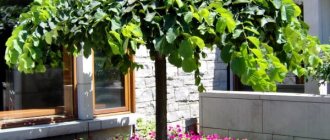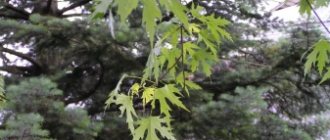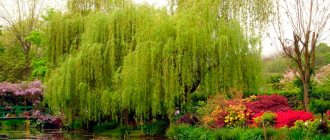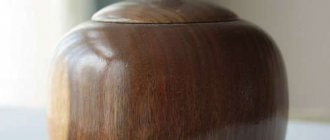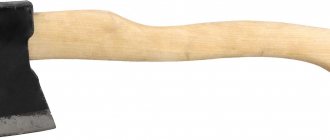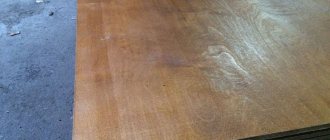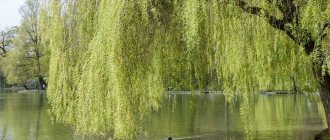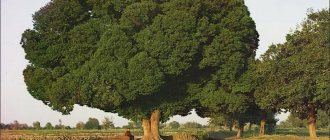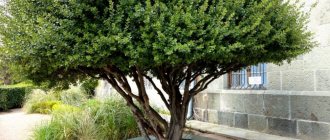Maple is extremely popular because of its appearance, especially in the fall, when its leaves turn fiery red, orange or yellow. This genus consists of more than 150 species. It can be presented in the form of a tree or shrub. In our article we will tell you about the most popular types and varieties of maple, give their brief characteristics and some tips on growing.
Norway maple or sycamore (Acer platanoides)
It is one of the most popular types of maple and is very often found in parks and forests. It is characterized by rapid growth rates, which makes it possible to create green fences and decorate parks from it in a relatively short period of time. In early spring, resinous buds form on the branches, which after some time turn into leaves. The leaves have a five-lobed configuration, are large in size, each blade ends with a sharp end. Depending on the season of the year, the leaves can be light green, green, yellow, orange-red, red or brown. The leaf surface is permeated with clearly defined veins. The tree can grow more than 30 m in height.
Young shoots are covered with smooth red-brown bark. Old shoots are distinguished by bark with cracks and a brownish-grayish color. The crown is spreading and dense. During flowering, the trees are covered with green or yellow small flowers that form shield-shaped inflorescences. Flowering begins in April-May. The flowers bloom before the leaves are formed, so during flowering the tree looks very beautiful and stands out from other trees. Flowers also release a pleasant sour-honey aroma that attracts insects. There are different types of flowers on the same tree. These plants are considered honey-bearing; each flower contains a large amount of nectar. Maple honey is light yellow in color, has a pleasant aroma and exquisite taste. At the end of flowering, seeds are formed, which are attached to two-lobed wings. After the seeds ripen, they tear off the branch and are carried by the wind over large areas. After overwintering under a layer of foliage, the seeds germinate in the spring and cover the soil with young shoots.
Ash-leaved or American maple (Acer negundo)
This tree is considered one of the most unpretentious and hardy of its kind, therefore it is often used for planting in large cities. The plant is also characterized by increased resistance to dust and gas, and has enhanced regeneration properties. This maple grows in height up to 15-20 m, has a trunk circumference of about 40-60 cm. The crown has slightly drooping shoots, develops unevenly, the trunk is slightly curved, covered with gray bark with small grooves. The leaves are arranged oppositely on long petioles, have 3-7 lobes, a length of 15-17 cm, an odd-pinnate configuration and a light green color.
The culture blooms with dioecious flowers: male flowers open earlier than female ones. The aroma of flowers attracts bees, which take nectar from them for honey. Flowering occurs in late spring early summer and lasts for 2 weeks. The flowers are small green in color and bloom along with the leaves. At the end of flowering, fruits are formed, consisting of a seed and an impeller. Full ripening of the fruits occurs in mid-autumn, but they continue to hang on the shoots until spring. More than 500,000 lionfish form on one tree. The average lifespan of a tree is 80-100 years in the wild; in growing conditions under unfavorable factors it is about 30 years.
Types of maples: tall and majestic
Among the maples there are very large representatives. One of them is the majestic maple, or velvety maple (Acer velutinum) , which grows in eastern Transcaucasia and the mountains of Northern Iran. With a height of 50 m, it looks like a real giant, moreover, the diameter of its trunk reaches 1.2 m. This maple looks especially impressive during fruiting, when it is decorated with large hanging fruiting panicles carrying up to 60 lionfish. A truly majestic sight.
The false sycamore maple (Acer pseudoplatanus) is slightly smaller in size and is a typical representative of the mountain forests of the southwestern part of Ukraine and the Caucasus. Tree up to 40 m tall and up to 2 m in diameter with dark gray bark peeling off in plates to reveal light young bark. It is especially beautiful when standing freely; it forms a dense tent-shaped crown. In ornamental gardening, various forms of false sycamore maple are most often used. The variety 'Purpurea' has two-colored leaves, dark green above and purple below. Young leaves of the 'Leopoldii' variety are covered with yellowish-pink spots, while mature leaves are variegated, with uneven, light green or cream spots.
No less monumental is the North American silver maple (Acer saccharinum) , reaching a height of 40 m with a trunk up to 1.5 m in diameter.
A characteristic feature of this species are deeply dissected five-lobed leaves on long petioles. They are light green above and silvery-white below, hence the specific name. In autumn, this maple stands out with light yellow foliage. It looks great along the banks of reservoirs, in alleys and group plantings, but it should be remembered that its branches often break off from adhered snow and strong gusts of wind. The decorative variety 'Wieri' is notable for its elegant carved foliage and picturesque crown with long, hanging shoots.
Field, plain or Neklen maple (Acer campestre)
This type of maple is used for park plantings due to its medium growth. In addition, it is very undemanding to growing conditions and does well in urban conditions of gas pollution and dust. The tree grows up to 12-20 m in height and is characterized by a broadly conical crown consisting of bright green five-lobed leaves. After all the leaves on the tree have blossomed, flowering begins. Flowers cover the crown and give the tree a very decorative appearance. The trunk is covered with light brown bark with light white stripes. This species is slightly frost-resistant and prefers to be grown in warm climates. Bonsai is often made from this species, since the tree tolerates cutting and shaping well. The plant has stable immunity against diseases and damage from insect pests. The root system is very powerful and branched, thanks to which the tree tolerates drought and soil compaction well.
This species has several varieties that differ in popularity:
- Field maple Elisriysk. A tree of this variety grows up to 8 m in height. It has a dense crown of a spherical configuration. The crown circumference is about 5 m. The shoots are covered with large five-lobed leaves. The leaves bloom in mid-spring and are reddish in color. When grown in the sun, they change color to yellow. When grown in the shade - green. During flowering, small yellow-green flowers bloom, collected in corymbose inflorescences. At the end of flowering, two-winged seeds are formed.
- Field maple Red Shine. This tree is short in stature, about 5 m. Its crown and spreading trunk are covered with gray bark. The leaves are large, multi-lobed, and have a red-purple color. It blooms with yellow or green flowers collected in medium-sized inflorescences.
- Field maple albovariegatum. This variety is characterized by trees no more than 5 m high. It is used to create hedges. It has a strong trunk and a wide branched crown, which is formed from the bottom of the trunk. The bark is silvery in color and covered with small cracks. The large leaves are light green in color, changing to yellow in the fall.
- Field maple Queen Elizabeth. This variety is characterized by fast growth rates and vertically growing shoots that form a narrow pyramidal crown configuration. The crown circumference reaches 10 m, the height of the tree is 80 m. Due to the shape of the crown, this variety is often used to decorate alleys and garden parks. In mid-spring, the shoots are covered with large leaves that are light green in color. The plant feels good when grown in shaded areas, but cannot grow in marshy soil. It also tolerates gas and dust in the atmosphere well, which is why it is often grown in large cities.
- Red field maple. It has a slow growth rate, grows up to 8 m in height. It has a decorative branched crown. The tree got its name due to the fact that its young branches are dark red in color. During flowering, the entire crown is decorated with small green-yellow flowers that form racemose inflorescences. At the end of flowering, lionfish about 3 cm long are formed, which consist of one large seed. The palmate leaves are olive green in color. The root system is branched and located in the upper layers of the soil. Reproduction occurs by root shoots or by seeds.
- Field maple spherical. This variety got its name due to the spherical shape of the crown. The tree is characterized by slow growth and grows to a height of no more than 5 m. Young leaves have a red-orange color, changing to golden yellow in the sun. The flowers are small yellow-green, forming paniculate inflorescences. Lionfish fruits. The root is highly branched and grows in the upper layers of the soil. The crop is propagated by root shoots, seeds or grafting.
Nutritional value and culinary uses of maple
Maple syrup is unique in its nutritional and energy properties: instead of harmful sucrose, it contains sweet dextrose produced by the tree - a natural monosaccharide, one of the most common sources of energy in living organisms on the planet. The syrup also contains 68% sucrose, 0.4% glucose, 0.3% fructose, 31% water. It is rich in microelements: potassium, calcium, magnesium, copper, iron, selenium, zinc, manganese, phosphorus, as well as organic acids: malic, succinic, citric and fumaric. The pH of maple syrup ranges from 5.6 to 7.914. One tablespoon (15 ml) of maple syrup contains approximately 50 calories.
Maple syrup is a healthy alternative to beet or cane sugar and has many culinary uses:
- they pour it over pancakes, waffles, and toast;
- used instead of fruit in plain yogurt to enhance its taste;
- added to cereal porridges;
- make desserts and various confectionery products;
- prepare sauces, meat and vegetable dishes.
In particular, you can bake ham or pork ribs with maple syrup. Its special sweet taste and natural aroma saturate the meat and caramelize its surface. Appetizers and sparkling wines are made by fermenting pure maple syrup or macerating with other herbs, plants or fruit juices. Subsequent distillation produces original drinks with varying degrees of alcohol concentration. Fancy kitchens use a variety of maple spirits to prepare flambés (cooking over natural fires).
By heating the syrup for a long time until it thickens, you can create maple sugar, maple honey and maple butter - a type of fudge that can be used as a natural, flavorful and healthy spread that does not contain fat. This product is called butter because of its light creamy texture. It is ideal for the diet of children and vegetarians, for the weakened and those recovering from serious illnesses, for patients with diabetes and people with gluten intolerance.
Some tips
- Maple syrup belongs to the category of expensive products, so fakes are often found. For example, in the form of corn syrup with a slight addition of maple. Genuine maple syrup is always pure (without impurities or cloudiness), translucent, amber in color, and has a slightly oily consistency.
- Sucrose crystals sometimes precipitate in the syrup. The situation can be corrected by heating the syrup in a water bath until they dissolve.
- The syrup can be stored in an airtight container in the refrigerator or freezer until next spring.
- If whitish films (mold) appear on the surface of the syrup, pass it through a layer of gauze, and then bring to a boil and cool. However, such syrup should not be stored for a long time.
Narrow-crowned sycamore maple (Pseudoplatanus 'Erectum')
This species was bred in Holland in 1935. Its representatives grow up to 25 m in height, however, the crown is only 8 meters. Young trees have a columnar crown configuration, while older trees have an oval shape. The leaves are large, leaf length is about 30 cm, attached to short thick petioles. The flowers are formed in umbellate inflorescences and are yellow-green in color. Trees prefer to be grown in shaded areas, in loose, fertile soil.
River maple (Acer ginnala)
Trees of this species are about 10 m high. The stems grow vertically, have a thin shape, the trunk is short, covered with light brown thin bark. The bark of mature trees does not develop deep cracks. The leaves are simple in shape, green in color, and have a glossy shine. By autumn they change their color to red or yellow-orange. Flowering occurs simultaneously with the formation of leaves. The flowers are green-yellow in color and form racemose inflorescences. At the end of flowering, winged fruits are formed, which are red in color. This variety is characterized by high frost resistance, drought resistance and wind resistance. Propagated by seeds.
Style
Maple products will fit perfectly into any interior. The plasticity of wood allows us to make furniture in a variety of colors and shapes. Most often this material is used in the following styles:
- Baroque - implies a rich, elaborate interior. The rooms, decorated with decorative elements, are complemented by the splendor of furniture of the most bizarre shapes. It is this that plays the leading role and attracts the eye. For furniture in the Baroque style, maple is painted dark and the wood texture is highlighted.
- Empire style is another decorative style. Coming from France in the 19th century, it is distinguished by its richness and abundance of detail. Empire style maple furniture is distinguished by symmetry, massive shapes, floral patterns and a large number of mirrors. Part of the decor can be made using bronze or gilding.
- Classic – considered universal. Strict, elegant beds, wardrobes, and tables made of maple will easily fit into any environment and add sophistication to the interior. No paint is used when decorating, so the wood most often retains its natural shade.
- Modern – characterized by spaciousness and a lot of light. Furniture made in this style is functional, simple, and goes well with any decoration.
Review of trendy furniture made from pallets, popular models
Thanks to its versatility, maple can be used in almost all styles. It easily changes color as well as shape, helping the designer get the desired result.
Maple furniture looks best in a modern interior decorated with contrasting shades.
Baroque
Empire style
Classical
Modern
Sycamore maple (Pseudoplatanus 'Negenia)
This is a fast-growing type of maple, which reaches a height of about 30 m. The diameter of the crown does not exceed 12 m. The crown has a wide pyramidal shape, consists of large dark green leaves covered with clearly defined veins. The leaves are held on short red petioles. The flowers are green or yellow, fragrant, and contain a large amount of nectar. Lionfish fruits. Sycamore maple is widely used for landscaping streets and city parks; it can grow on any type of soil and is a wind-resistant, frost-resistant plant. Propagated by seeds or vegetatively.
Purple-leaved sycamore maple (Psevdoplatanus 'Atropurpureum')
A fast-growing deciduous tree about 30 m high, with a 15-meter wide conical crown. The leaves are five-lobed, each lobe has a sharp end. When blooming, the leaves have a brownish-red color, which changes to dark green. The back side of the leaf is covered with thick red hair. At the end of flowering, winged fruits of a dark red color are formed. The tree can be grown in urban gas and pollution conditions. It is frost-resistant and likes to be grown in open, sunny places.
Sycamore maple (Pseudoplatanus 'Rotterdam')
This species was bred in Rotterdam and is a rather valuable plant species. The tree is large, has a cone-shaped branched crown, which takes on the shape of an ellipse at the age of 5-7 years. In winter, the trunk is covered with green bark. The leaves have the same length and width, which is 10-13 cm. The size of the leaf differs depending on where it grows. The trunk leaves are smaller in size. The leaf blade is dark green and has many bright veins. These trees are slightly frost-resistant; they like to be grown in semi-shaded places and in the sun.
Acer divergens Pax
This type of maple is native to Türkiye and Armenia, where it can be seen on dry slopes. The height of such a tree does not exceed 4 m, the crown circumference is no more than a meter. Refers to slow-growing deciduous trees, the growing season of which begins in April and ends in November. Flowering occurs in May and lasts for 7-10 days. Fruits are formed on trees that are 10 years old. This species is very frost-resistant, able to tolerate frosts of more than 25 degrees.
Chemical composition of maple
The following components can be distinguished in the chemical composition of maple, thanks to which the product has beneficial properties:
- tannins are organic compounds that give the product an astringent taste. This component is capable of killing pathogenic microorganisms, has anti-inflammatory and analgesic effects;
- vitamins A and C, without which not a single process in the human body is possible. These components play the role of antioxidants, preventing the destruction of cell membranes when the biochemical process is disrupted;
- organic acids - allow you to stabilize the metabolic process and prevent the occurrence of alkalosis.
It is important to understand that maple is used only in folk medicine, so its chemical composition has not been well studied.
Japanese maple (Acer japonicum Aconitifolium)
Representatives of this species are distinguished by trees that grow no more than 5 m in height. The shoots are covered with decorative leaves of light green color up to 15 cm long. The crown has a cone-shaped configuration. Flowering occurs at the end of April, the tree blooms with green-yellow flowers collected in racemes. The root is widely branched and grows in the upper layers of the earth, so the plant reacts painfully to swampy and waterlogged soils. Likes to be grown in open sunny places in fertile, loose soil. Does not tolerate pruning well.
Use in landscape design
False sycamore maple (sycamore) or white maple is a decoration of gardens, parks and cities. Its low-growing varieties look good in alleys; large representatives are planted alone in open areas away from buildings. Maple can be either a garden accent or part of a thoughtful wood composition.
It is not recommended to plant flowers or shrubs near the trunk. The sycamore tree trunk needs to be loosened and watered abundantly (up to 20 liters), which is not suitable for other plants.
Coralbark maple (Acer palmatum 'Sangokaku')
This type of maple is represented by a shrubby plant growing in height up to 6 m. The variety was named due to the fact that young shoots have a bright coral color, the intensity of which intensifies in winter. The leaves are light green with a pink tint. The leaf blade is grayish, has a red edge along the edge. In autumn the leaves change color to bright yellow. It blooms with greenish-yellow flowers that form small inflorescences. The inflorescences densely cover the crown and give the tree a decorative appearance. Due to the shallow root system, the tree needs regular watering and reacts painfully to waterlogging and stagnation of water in the soil. It is also not recommended to reforge the area near the trunk with a bayonet shovel, so as not to damage the roots.
Features of wood
Maple is a fairly common tree in Europe, Asia, and America. The main feature of wood is the absence of kernels. Thanks to this, the texture of the finished product is beautiful and uniform. The rays of the tree are most clearly visible when viewed through a radial section. If you process the material correctly, you will see a collection of different lines that turns into a beautiful drawing.
Furniture made from maple is yellow or almost white, so it is well suited for light interiors. It does not dry out or crack, and can last for more than one year. The main thing is to process it correctly, otherwise bark beetles or other pests may appear in the tree. Most often, maple for the furniture industry is varnished or impregnated. Among the advantages of this material are:
- a structure that allows you to grind and cut decorative parts;
- low cost;
- strength;
- possibility of combination with glass, metal and other wood;
- maple does not crack or dry out;
- high bending ability;
- if properly stained, maple can look like a more valuable species;
- easy painting and sanding.
Particularly prized are the species of maple called "bird's eye" and "sugar" maple, which have beautiful textures. The main disadvantage of this raw material is its susceptibility to moisture. In a damp room, wood quickly becomes wet and becomes covered with mold and rot. You can get rid of this drawback by regularly treating furniture with special products. It is also important to pay attention to drying conditions. Due to improper processing, the wood may become deformed or crack.
Features and advantages of ash furniture, combination with interior
Yellow ash maple (Acer negundo 'Odessanum')
This tree has an average growth rate and grows to a height of about 6-7 m. It is characterized by the presence of fleecy white shoots. The leaves have a yellowish color and a shiny surface, forming a spherical and very dense crown. This variety is most often propagated by grafting. Flowers form in umbellate inflorescences that densely cover the stems. Trees are sensitive to soil compaction due to their shallow root system. Due to the strong branching of the root shoots, the plant tolerates strong winds well. It likes to be grown in open sunny places, but also does well in partial shade.
Color combinations
The maple color is light and warm. Furniture made from this wood fits perfectly into any interior and visually expands the space. It can be combined with products from a wide variety of wood species. In one room you can place a light maple cabinet and a dark oak table next to each other. Being next to each other, they will contrast with each other, creating an interesting combination.
Advantages and features of carved furniture, methods of decoration
You can fill the room with color by combining light maple and dark mountain larch. As a result of this mixture, the warm shade will look even more comfortable, and the room will acquire a special chic. Dark wallpaper and light parquet will help to further enhance the contrast. You can also combine maple with walnut parts. They will highlight the furniture against the background of light walls and prevent it from getting lost in space.
In the interior, a warm yellowish color goes well with pastel shades.
Bed linen in a soft lilac shade will look great on a maple bed. If we are talking about a closet, then it will not be lost against the background of dark blue or purple wallpaper. Pistachio and other delicate colors will help to dilute the interior.
Maple Semenov (Acer semenоvii)
The homeland of this species is considered to be Central Asia and Central Afghanistan. The tree can be presented in the form of a bush. It has an average growth rate and does not exceed a height of 6 m. The crown is formed in a spherical configuration and consists of grayish shoots covered with smooth bark. Mature trees have wrinkled bark. The leaves have a fleshy texture. The upper side of the leaf is grayish-green, the back side is light green. It blooms with yellowish flowers collected in medium-sized inflorescences. At the end of flowering, winged fruits are formed, about 3 cm long. The tree is a frost- and wind-resistant plant and can be grown in semi-shaded places.
What diseases does maple help with?
Since maple has beneficial properties and is not capable of causing harm to the body if used correctly and in consultation with your doctor, it is widely used in folk medicine for a variety of diseases. For decoctions and infusions, not only maple leaves are used, but also bark, flowers, and fruits. Using decoctions prepared from maple raw materials, you can get rid of the following diseases:
- herpes;
- viral infections;
- pneumonia;
- heart disease;
- radiculitis;
- scurvy;
- vitamin deficiency;
- stomatitis;
- bronchitis;
- hepatitis A;
- diarrhea;
- colds;
- ulcers
Considering that some people prepare brooms, then you need to know about the benefits and harms of ordinary maple in the bathhouse.
Golden variegated ash maple (Acer negundo 'Aureo-variegatum')
A representative of this species can grow up to 7 m in height and have a crown circumference of up to 5 m. The crown is branched and hemispherical. The tree is a fast-growing one. Young leaves are distinguished by a pink color, which changes to light green, covered with yellowish spots. The leaves are decorated with a golden border along the edge. Flowering begins in mid-spring with yellow flowers hanging in semi-umbrella-like inflorescences. It is a very shade-tolerant plant that can grow in almost any soil. Tolerates frosts and strong winds well. Propagated by grafting and seeds.
From the history of the use of sugar maple
In spring it was used as a tonic. Even in pre-Columbian times, American Indians extracted and used the sweet sap of the sugar maple for food and as a medicine. The method of converting maple sap into syrup was also known to them even before the colonization of America by Europeans. In Canada, the production of maple sugar, butter, syrup and various drinks from sugar maple sap acquired an industrial scale only in the 19th century. And the maple leaf has become the national emblem of the state and is now depicted on the country’s banner. Sugar maple was brought to England in 1734. From there, the plant, as an ornamental tree, began to be actively distributed to other European countries.
Seedlings of this maple appeared in Russia at the beginning of the 19th century. They took root well in the St. Petersburg Botanical Garden, but did not receive a wide population in cultivation, although the advantages and beneficial properties of this type of maple deserved great attention regarding the feasibility of its cultivation in the southern forest and forest-steppe zones of Russia, Belarus, and Ukraine.
Today, the extraction and consumption of maple syrup is widespread in the provinces of Quebec (74% of world production, and 95% of Canadian production) and less so in Ontario (Canada), where local residents consume it daily, purchasing it at a relatively low price. Maple sap products are also very popular in Japan and Germany as a rare exotic food. Birch sap is considered to be an order of magnitude lower in terms of taste and beneficial properties.
American and Canadian breeders select sugar maple samples that annually produce a lot of high-quality juice. Grafting material is taken from such trees for mass production and improvement of planting seedlings.
Silver maple (Acer saccharinum)
This species is one of the largest maple trees, the height of which can exceed 40 m. The crown is spreading and very wide, consisting of silvery, large, five-lobed leaves. The trunk is covered with light gray bark with small grooves. Trees prefer to grow in moist soils with plenty of sunlight. It has a superficial, widely branched root system. Propagated by winged seeds.
Maple, maple leaves: description
Most of the maples are trees 10-40 m high. There are also shrubs 5-10 m high among them.
Maple is mainly a deciduous plant. However, there are also evergreen species (in South Asia and the Mediterranean region).
The description of the maple leaf may vary among different plant species.
Maple leaves are opposite, palm-shaped (palmated) in many species. Each blade has 3-9 veins, one of which is in the middle. There are several species with leaves that are compound palmate, compound pinnate, even with pinnate venation or without lobes.
A small number of maple species have trefoil leaves (gray, trifloral, Manchurian and Maximovich maple). The ash-leaved maple has complex pinnate leaves, consisting of three, five, seven and even more leaves. The leaves of the hornbeam maple are the simplest and have pinnate veins, reminiscent of hornbeams.
Variegated ash maple (Acer negundo 'Flamingo')
This species can be presented either as a bush or a small tree. The height of the tree can be about 7 m. The crown has a circumference of 4-6 m and consists of silver leaves with a pink or marble pattern. The leaves are attached to pink-green or pink petioles. The bark of young shoots has a bluish shiny coating. The tree is drought-resistant and likes to be grown in semi-shaded places.
Join our Facebook group
